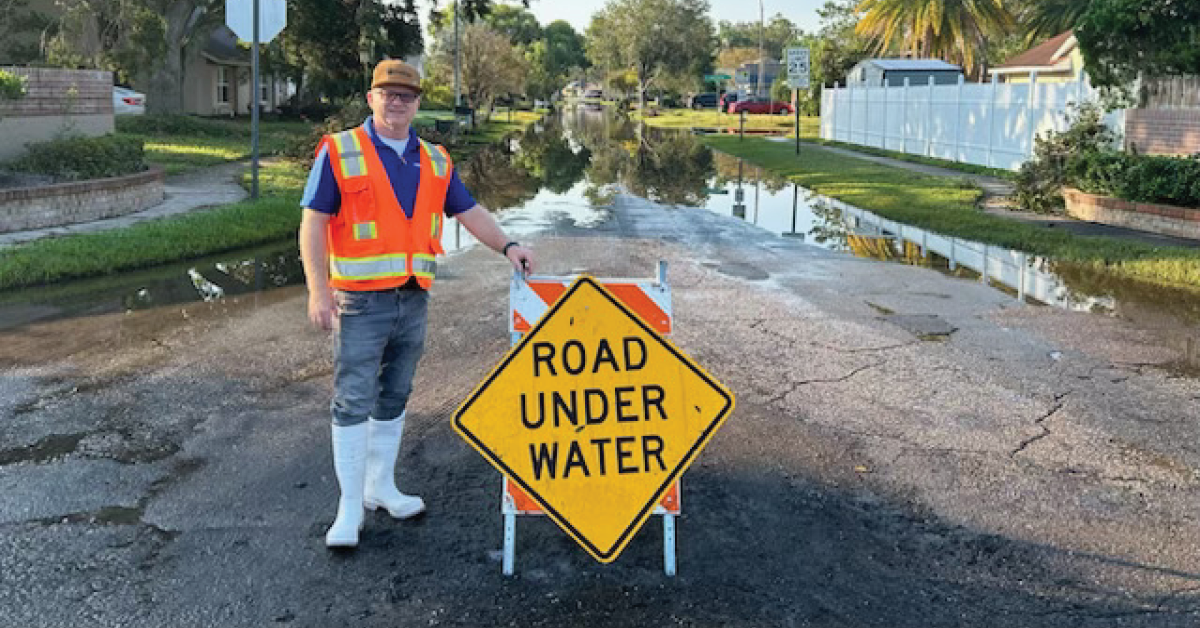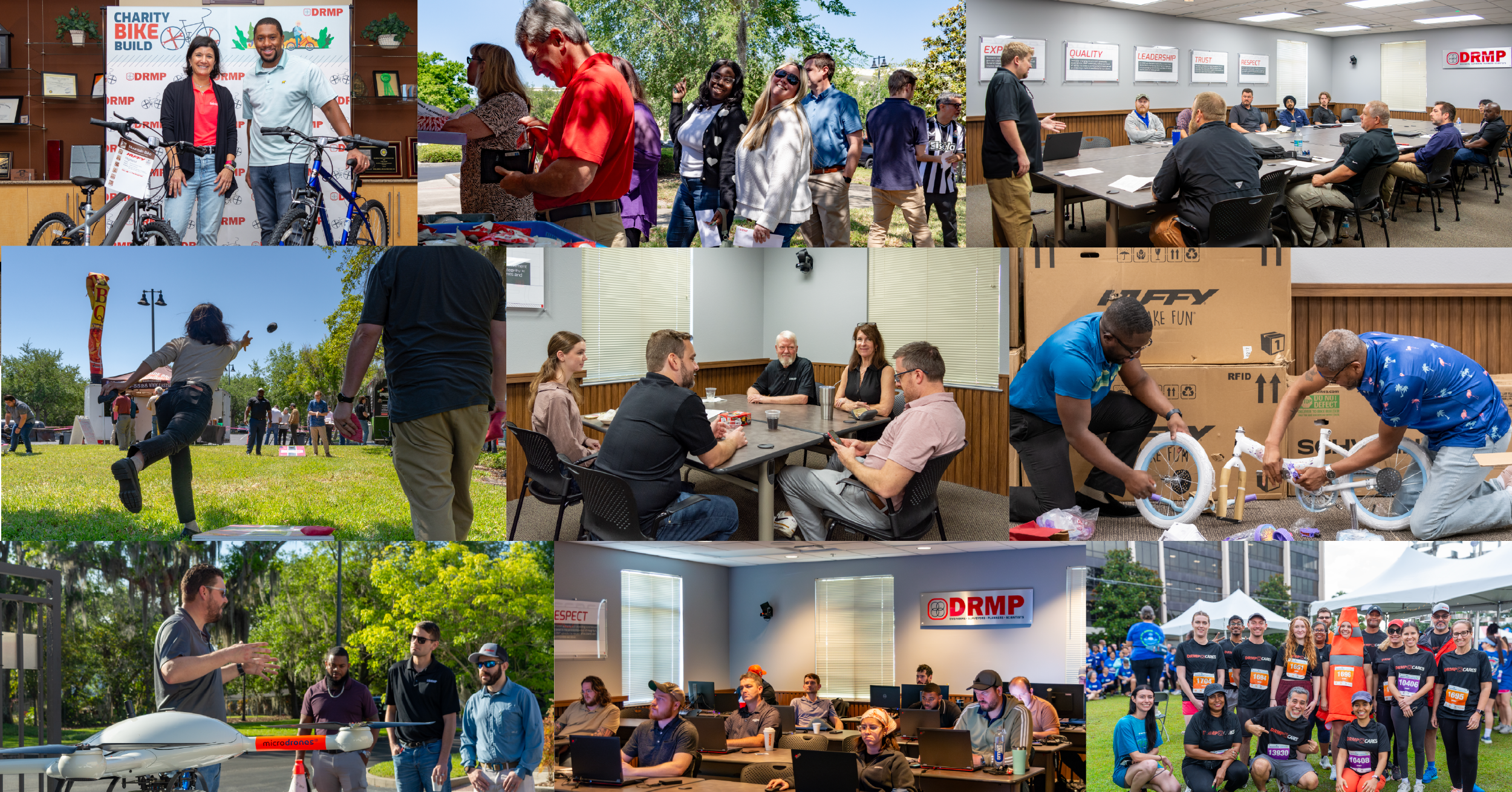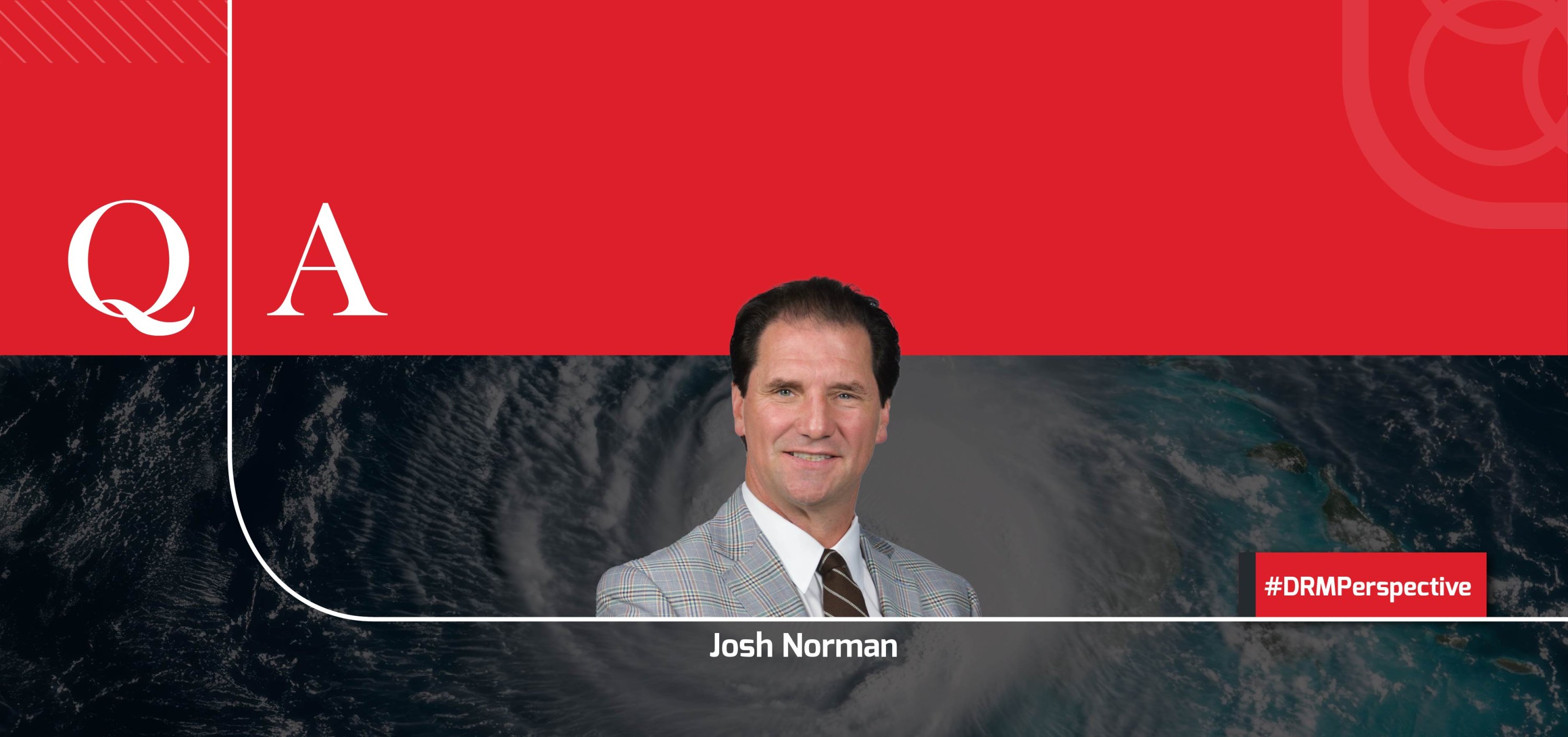As stormwater engineers, one of our key responsibilities is to manage runoff and provide for water quality improvements where practical. We strive to improve the quality of life for the public by improving infrastructure.
Recently, I was out in flood-affected neighborhoods visiting homes and other areas to document conditions for ongoing municipal and Florida Department of Transportation projects.
These opportunities, although challenging, allow us to capture real-world data that informs how we solve flooding. Flooded areas are often difficult to access, especially in urban settings or areas with damaged infrastructure, such as roads and bridges. This can delay data collection or prevent access to critical points entirely. Flooded areas can also be dangerous, with fast-moving water, unstable ground, and submerged hazards, such as debris, which can make data collection risky for field engineers and inspectors.
I consider myself a bit of a storm chaser. When significant rainfall events hit—like Tropical Storm Debby and hurricanes Helene and Milton —I make it a point to document flooding conditions firsthand as much as possible. This information is invaluable when designing solutions for neighborhoods and other areas that regularly experience flooding.
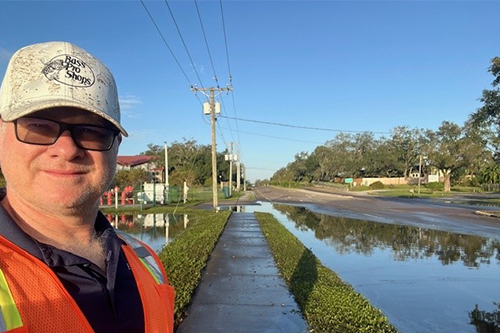
We often know there’s an issue, but without accurate records, we don’t always know the full extent of the flooding. Typically, the city, county, and department of transportation maintenance teams provide this data that helps us understand the problem and to design drainage systems to better manage stormwater. However, fieldwork allows me to personally pinpoint what’s causing the flooding, whether it’s undersized pipes, poorly graded roadways, or a tailwater system that isn’t draining effectively. Interviewing nearby residents and businesses can also be very helpful in determining the duration, frequency, and extent of the flooding.
Getting Calculations Right Can Save Lives
I conduct storm reconnaissance both during and after storms, though primarily once it’s safe to do so. Observing the aftermath often provides a clearer picture because we are not designing drainage or roadway systems to handle extreme events, such as 100-year storms—unless it's for something critical, like an emergency access road or an evacuation route. For local residential roads, drainage systems are usually designed for lesser storm events.
Depending on the project, I’ll assess conditions during the rain itself, but sometimes I wait, especially when creek systems lag in when they crest or reach peak stage. It can take several hours or even days for rivers or creeks to reach their peak levels.
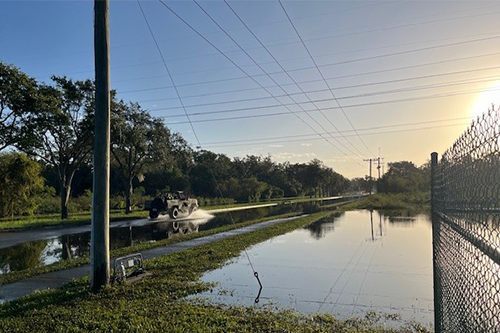
If I need to document hydroplaning risks, I’ll do it during the rain. Seeing these issues firsthand brings a project to life and adds meaning to the work, knowing we are making communities safer for the public. It’s also personal to me—my brother hydroplaned on I-75 in Tampa, and it could have cost him his life. That's why getting hydroplaning calculations right is crucial in designing safer roadways.
Designing for Resilience and the Future
Additionally, when we model drainage systems, we must think long-term. In coastal areas, sea level rise is a critical factor, especially as we’re seeing a rise in extreme weather events resulting from climate change. Without accounting for future conditions, projects designed today could be undersized in just a few decades, which is why many coastal regions now require us to incorporate sea level rise into our designs.
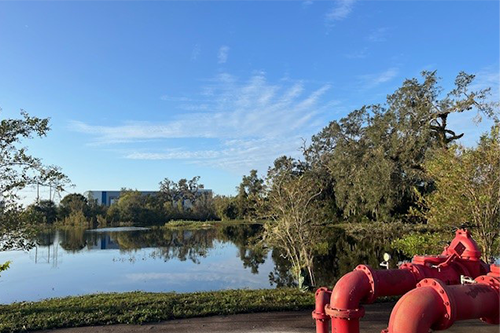
This hands-on approach stems from my background working for the Florida Department of Transportation as a Drainage Engineer where I also served on its State Emergency Response Team (SERT) assessing storm damage and investigating flooding complaints.
It’s become second nature to conduct thorough, rain-soaked field reviews for any project I’m working on. While some newer engineers may rely on satellite imagery, I have found that nothing compares to being out in the field and seeing the conditions for myself. I share my knowledge with DRMP’s young drainage engineers to show them the value of firsthand experience and to encourage them to prioritize field reviews.
Some of the innovative stormwater best management practices (BMP’s) that we have incorporated have included backflow prevention devices, CDS units, denitrification walls, and stormwater pumping stations.
Ultimately, these storm events aren’t just data points—they're reminders of the importance of designing systems that protect communities. This work directly impacts people’s safety, and knowing that, makes every field review, every storm-chasing excursion, feel worth it.


